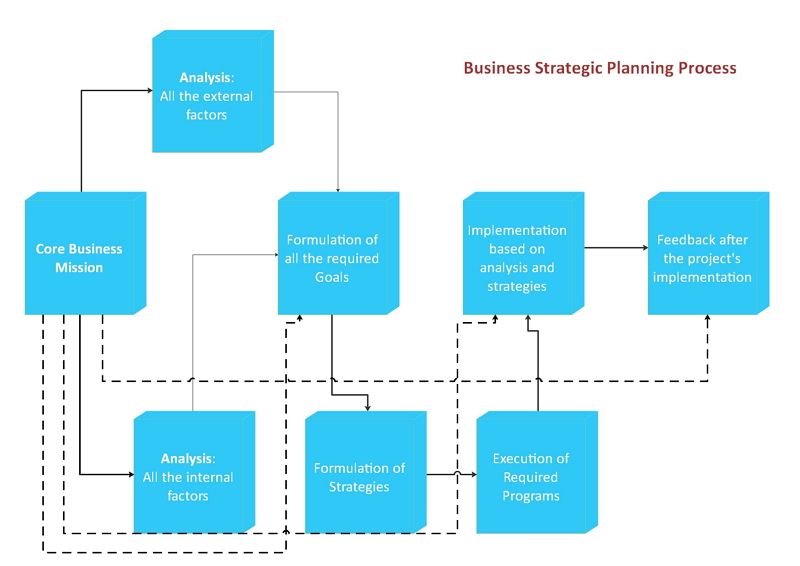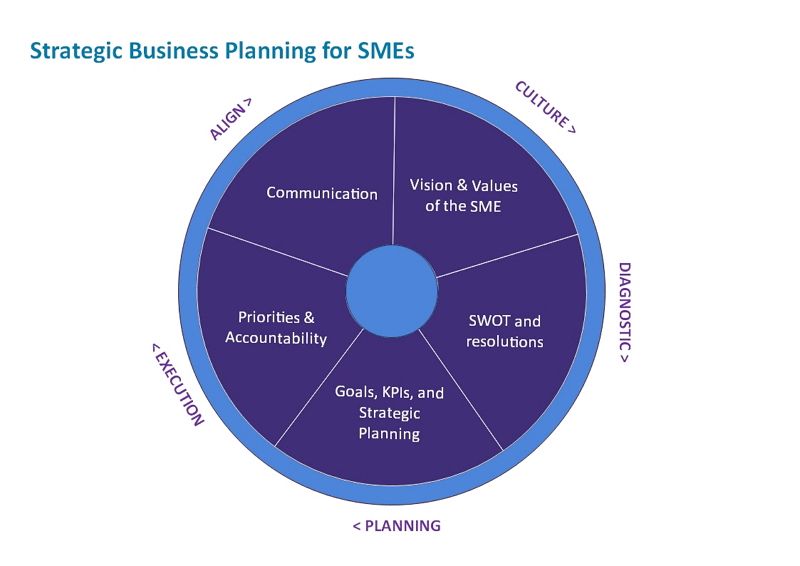What is Strategic Planning with Examples?
Owning a business requires you to think ahead of the contemporaries. It requires a process to look differently at the ideas of planning your future with your teammates. Strategic planning can help in analyzing the requirements of businesses and set realistic goals and objectives. Let's head to the article to understand what is strategic planning.
1. What is Strategic Planning
Strategic planning is the process of determining the company's end goals and establishing a vision on how to achieve them. The strategic plan consists of documenting the actions that will play a pivotal role in the long term and initiating a systematic way to develop it.
1.1 The Benefits of Strategic Planning
The process of strategic planning benefits every individual in one way or the other. The business owner knows better about the company's goals and objectives, but it is the employees who work day and night to make that happen. Hence, strategic planning takes account of every individual involved in growth and success, which in return yields more significant results.
- Communicating The Plan
- Increase Productivity
- Identifying Strengths and Weaknesses
- Setting Direction and Fostering Company
The consistent involvement of employees is what makes a business successful. Their dedication and commitment often lead the company to reach new heights. Their share of view is of the utmost importance for the company's growth and planning for the future.
In addition to the employees, third-party vendors can also provide an unbiased view of where they stand as they deal with multiple businesses. Getting their thoughts can be a game-changer in the future. Strategic planning is all about encouraging new ideas and executing them for the company's betterment, hence taking in views from that side of the table can streamline the process.
Discussions about achieving the company's goals and objectives with your employees often now and then will increase the sense of accountability. Getting involved in a long-term plan assures them to be motivated towards the end goal and thus increases productivity.
Strategic planning involves analyzing every detail of the business that could hamper the future of the company. The process includes identifying areas that the company excels at and the areas where it needs improvement. By examining the strengths and weaknesses, you can improve your weak spots and minimize the risks in the future.
As the process goes further, it gives you a clear idea of how the business will grow in the future and what kind of aspects can impact growth. These discussions provide you with time to figure out new strategies to put yourself on the front foot for the longest time.

2. The Process of Strategic Planning
Strategic planning rolls out in three steps: discussion, development, and review & updating.
Discussion
This step involves examining, analyzing, and gathering every information, and information required to go further in the process. The phase will include scheduling up meetings with your employees, vendors to have a clear idea of where the company stands now and what the company wants to achieve in the coming years. You can always lookout in the market to have a clear head about the competition in the industry you are operating in.
Development
After having regular discussions with the people involved in the process, you can now move on to the development phase. Once you analyze your company's strengths, weaknesses, threats, and opportunities, you can put together the strategic plan. This should involve the five essential components - a vision statement, a mission statement, goals and objectives, an action plan, and details on how often the strategic plan will be reviewed and updated.
Review and Updating
The next step of a successful strategic plan is reviewing your goals from time to time and updating them as per demands. Ensure that you keep updating the people involved in the process so that they share their views on the future development of the plan. Strategic planning is a process that keeps on going for the betterment of the company, and hence a project cannot sit on the shelf for years. It needs to be reviewed and updated regularly.

Source:EdrawMax
3. Elements in The Strategic Planning
There are mainly 4 elements that should be considered during the strategic planning:
When to Start Strategic Planning?
Strategic planning should not wait for long if you want your business to grow successfully. If your business is a few months old, you might think of what is and is not working in the favor. Set your goals and make strategic planning to achieve them sooner.
And even if you are in the race for a very long time, it is no harm to sit back and plan what the next ten years hold for you. When you are ready, gather your team and involve them in putting the best out there.
How Much Will The Strategic Planning Cost?
The cost of strategic planning depends on the size of the company. It is an investment that you make to secure your future. The rigorous discussions with your team members and people outside can cost anywhere between $150 to $15000. This cost sums up as the consulting fees in addition to your staff's time, travel costs, and offsite meeting costs.
Who Should Do Strategic Planning?
Planning for a company's future endeavors is the job of the executive team, say CEO, or the senior partners in the leadership team. Strategic planning is a long-term process, and it should involve every brilliant mind on your side so that you don't miss any ideas that can change your world.
What's The Outcome of Strategic Planning?
Strategic planning yields numerous benefits in the long run for your company.
- It helps to generate an analysis of your current status, which includes the past performance, performance against your competition in the market, and the key aspects that drive the business model;
- It supports to consolidate the firm's beliefs and plans for future success;
- It offers a clear vision regarding ideas with a unified mission statement;
- The strategies you will use to accomplish your mission;
- It demonstrate a clear road map to the progress of the company.
4. Examples of Strategic Planning
According to the objectives of the planning, there are 2 kinds of strategic planning which are for buisness or for non-profits.
(1)For Business
A strategic plan for a business will outline the company's mission and vision, inclusive of the action plans required to achieve them.
(2)For Non-Profits
A strategic plan for the Non-profits will include the vision, the mission, the community it serves, the community it plans to help, and its impact in the longer run.
Strategic business planning for SMEs revolves around culture, diagnostics, planning, and execution. This further drives the vision and values of the SME and depicts SWOT and resolutions. Through this, SMEs can set their priorities and accountability to reach their goals.

A business strategic planning process begins with identifying the core business mission, which leads to the analysis of all the external and internal factors. The internal factors impact the formulation of strategies, whereas the external factors lead to the formulation of all the required goals. Examining both internal and external factors, the strategic planning gets implemented based on the analysis and executes the program necessary.
5. Summary
Focusing on the business's long-term objectives is an essential process, and hence, strategic planning should be included as a crucial part of the business's development. Now that you have understood what strategic planning is, stop waiting and start researching your plans for future endeavors with EdrawMax. Click here and start creating your strategic planning now.




